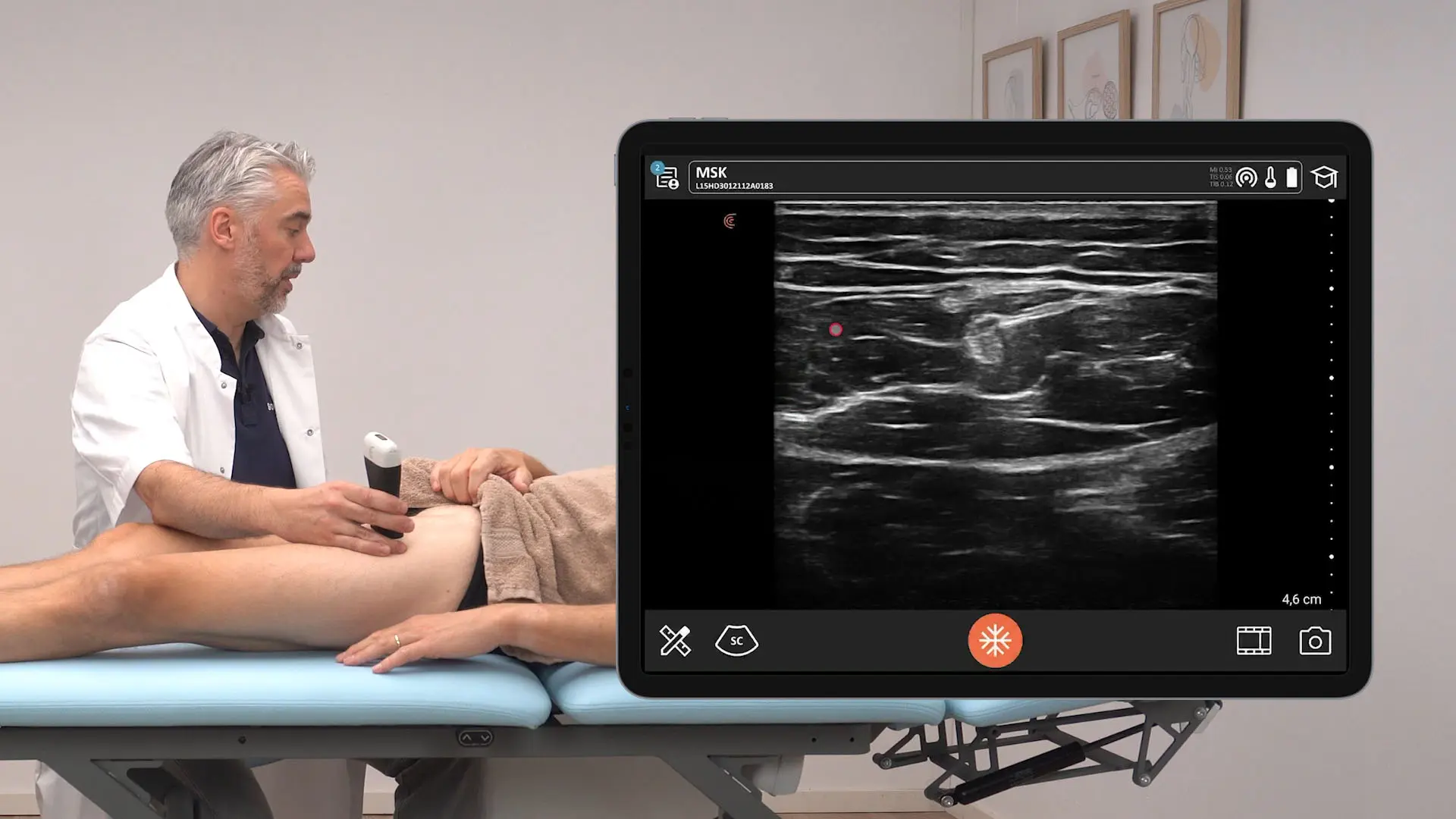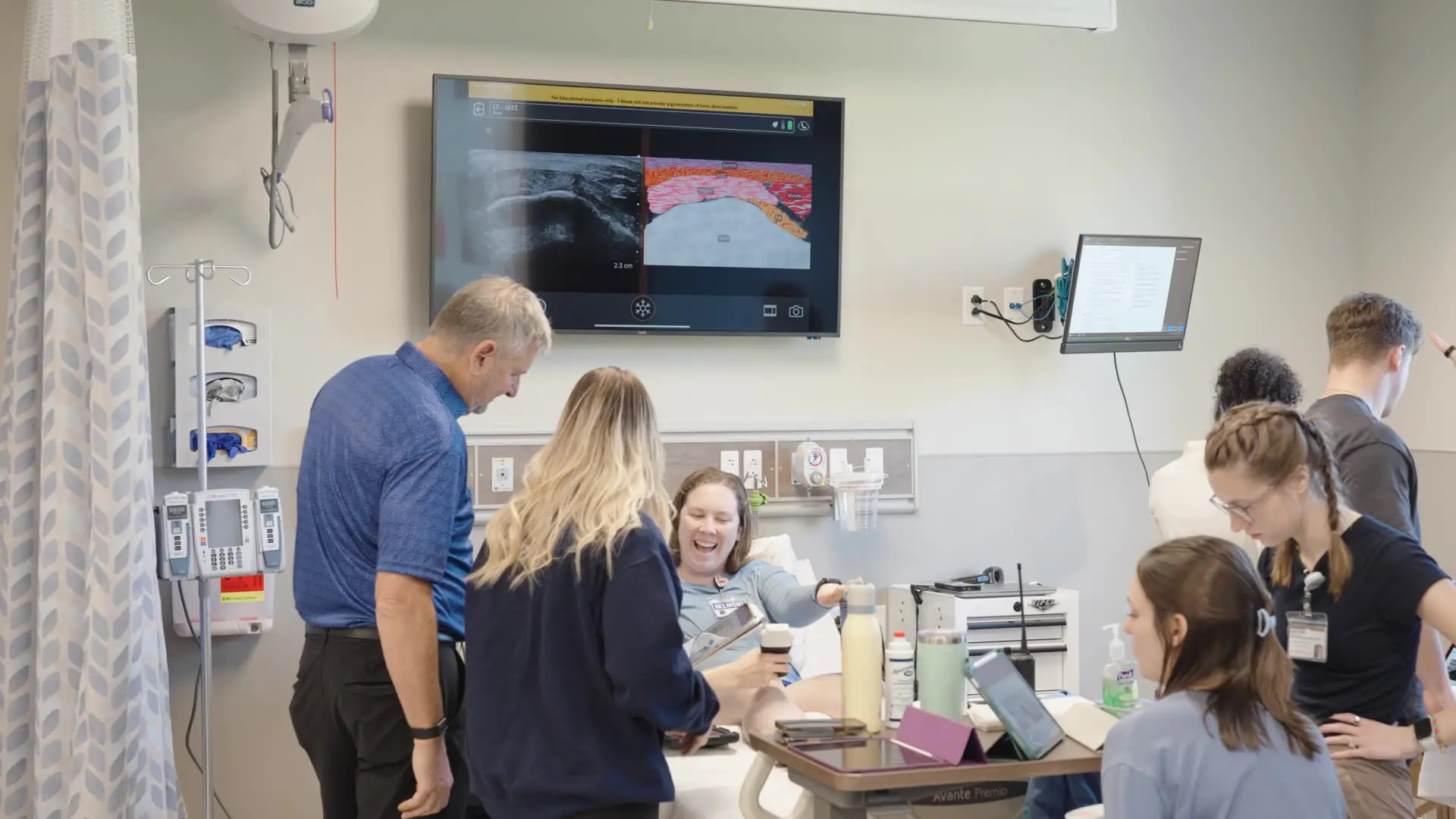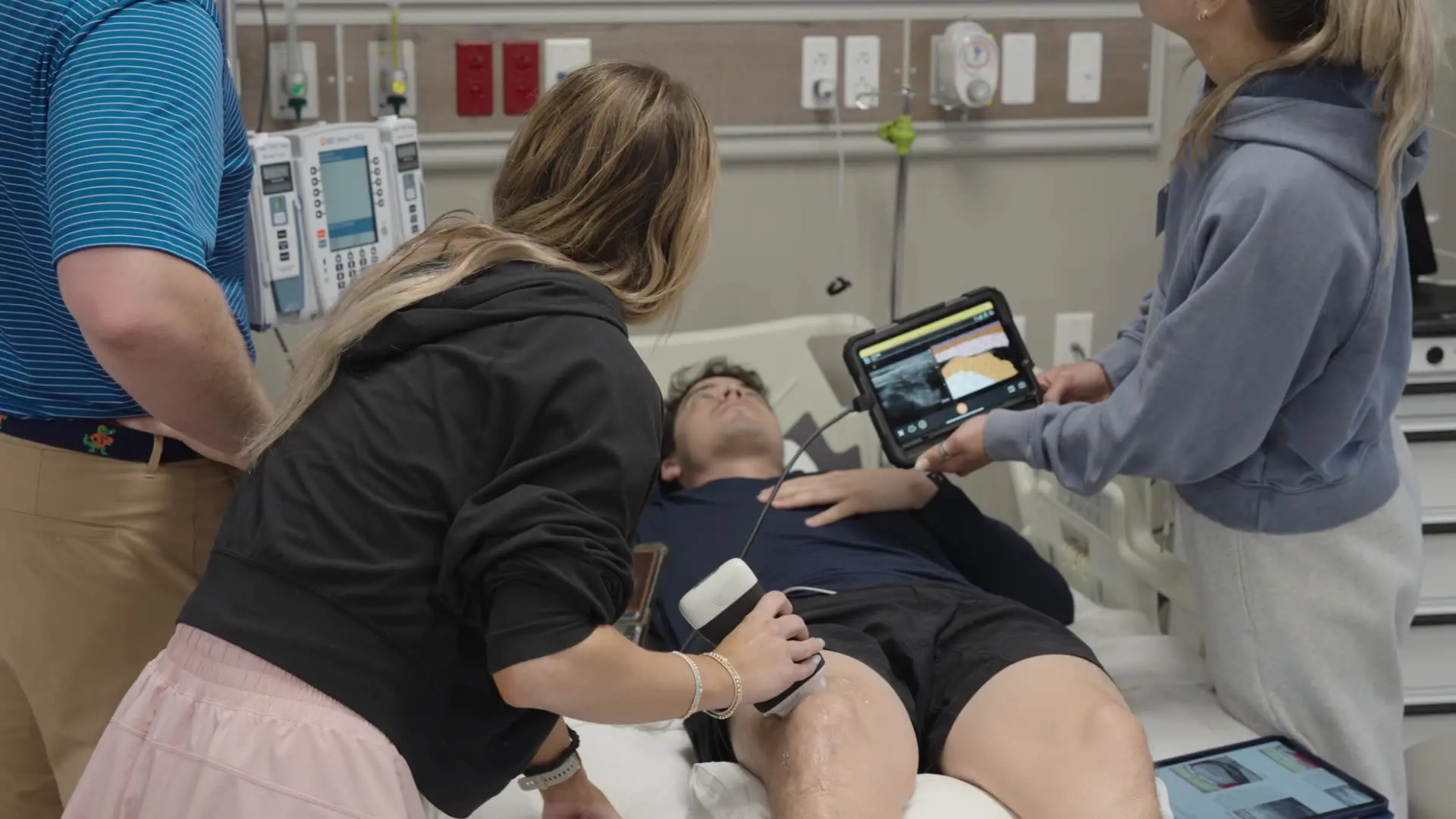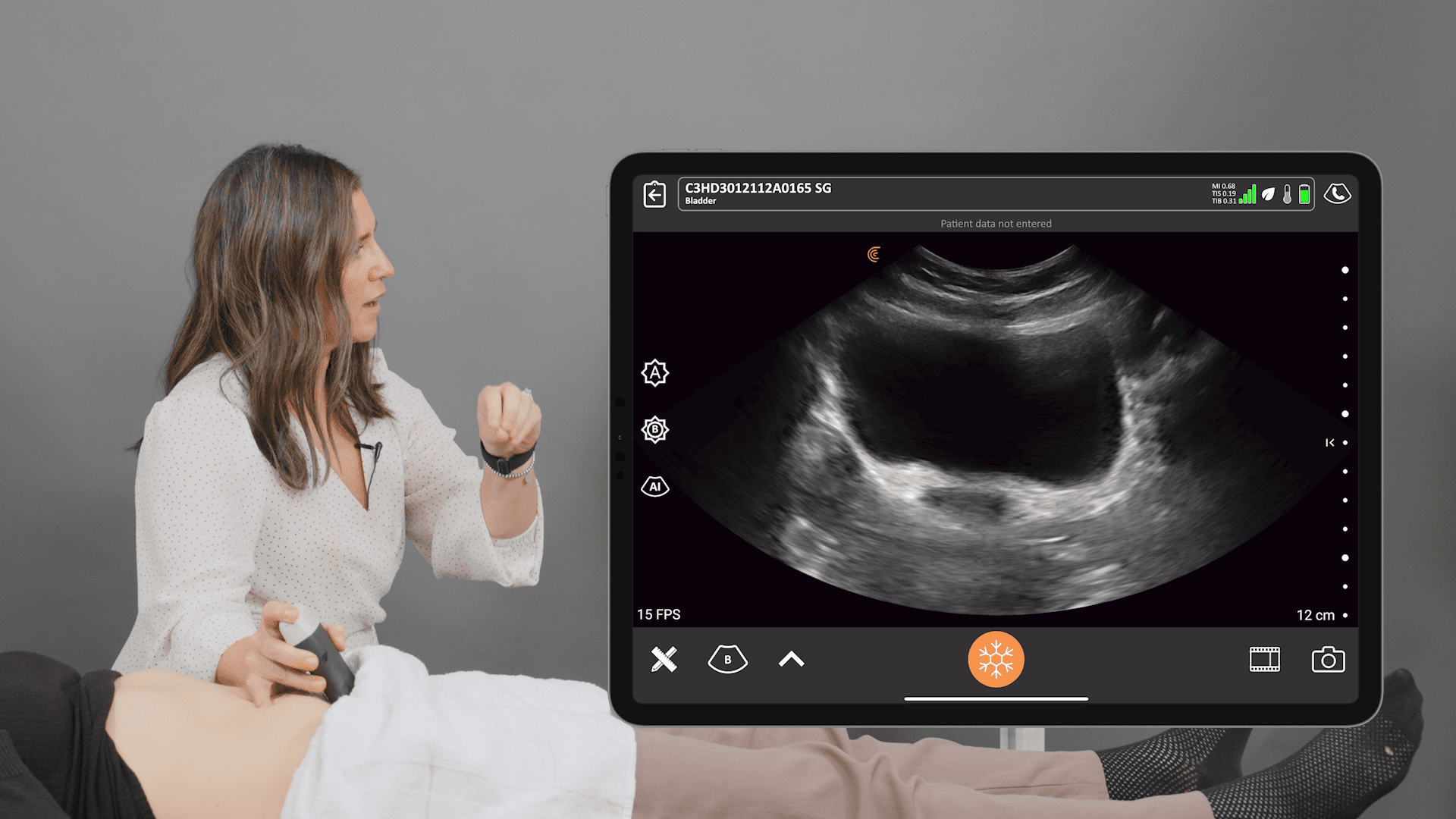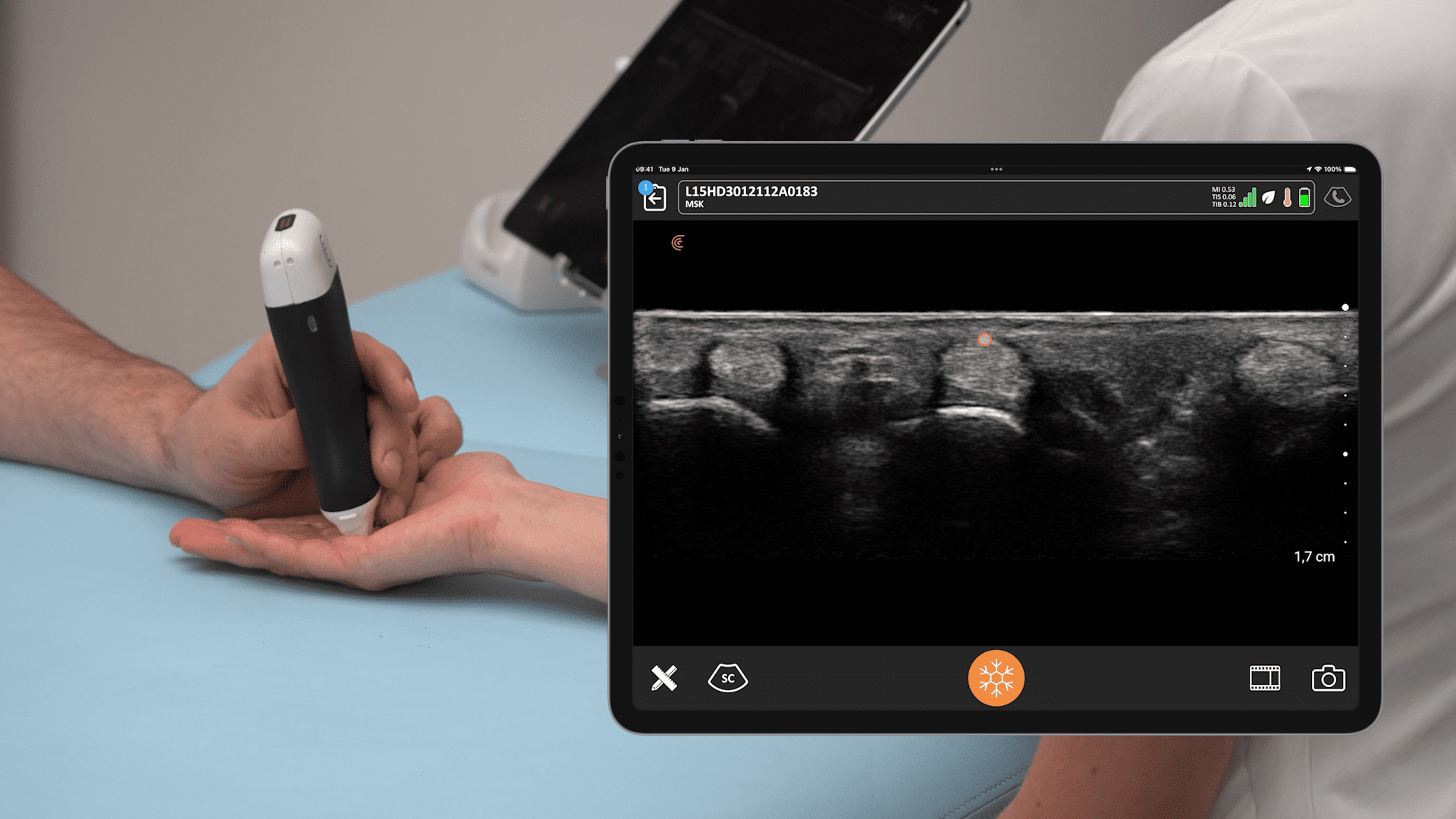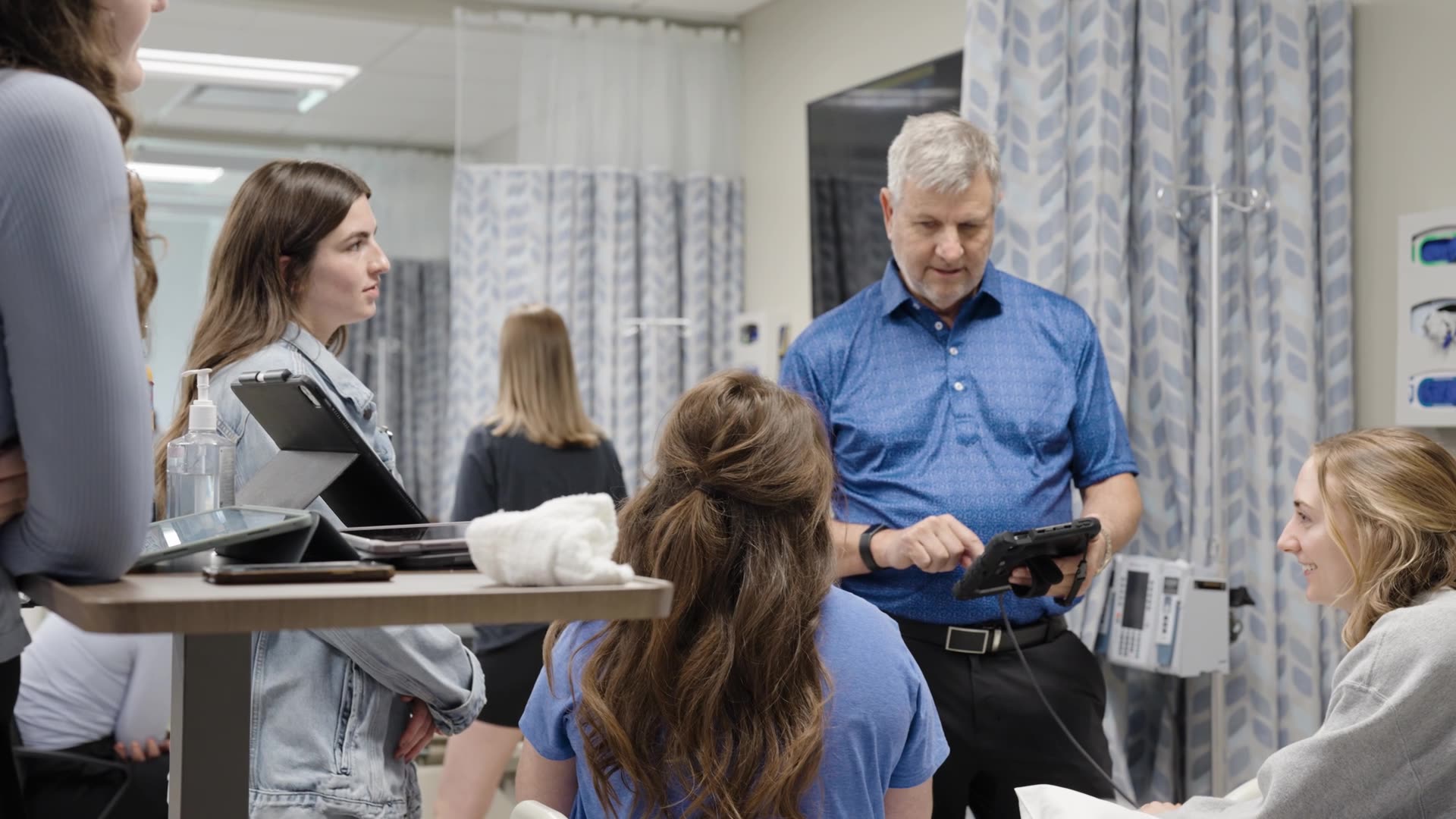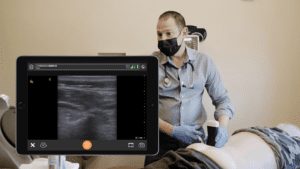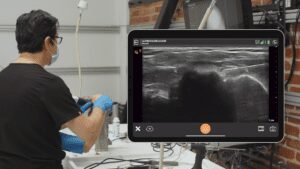Renowned pain management expert Dr. David Rosenblum recently joined us to present a webinar during which he presented four ultrasound-guided interventions to help his patients cope with chronic pain. Watch the full webinar, “Head to Toe Analgesia: Ultrasound-Guided Subacromial, Cluneal Nerve, Knee, and Tarsal Tunnel Injections“, or read on for highlights about his technique for an ultrasound-guided tarsal tunnel injection.
Tarsal Tunnel Syndrome is caused by compression of the posterior tibial nerve.
Symptoms include tingling, burning, numbness, or pain, typically on the medial ankle or the bottom of the foot. In some cases, patients have already had surgical decompression, but a branch of the nerve may have been missed.
Locating the Tarsal Tunnel
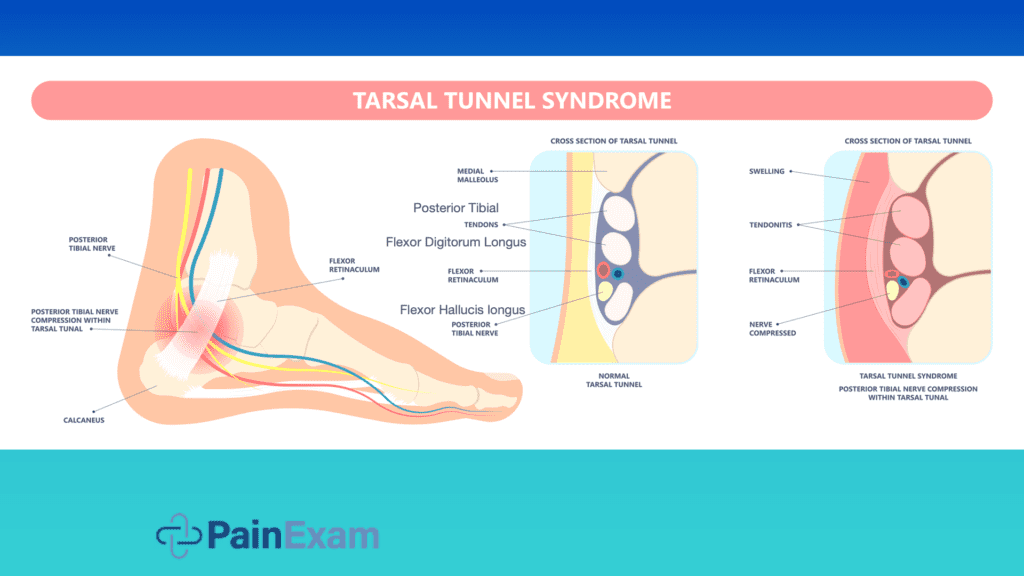
Ultrasound-guided Tarsal Tunnel Injections are Effective
Following a cohort of 228 patients who had ultrasound-guided tarsal tunnel injections, it was shown that over 75% of the patients required no actual tarsal tunnel release down the line, indicating that this procedure does provide an effective conservative treatment option for patients with tarsal tunnel syndrome.

Dr. Rosenblum’s Criteria
I don’t even usually go to the tarsal tunnel unless it’s a tarsal tunnel problem. Because the tarsal tunnel is so superficial. And you may also only block one of the branches of the tibial nerve at this area and may not get everything you want. If you want more proximal, you’ll get a lot more coverage.”
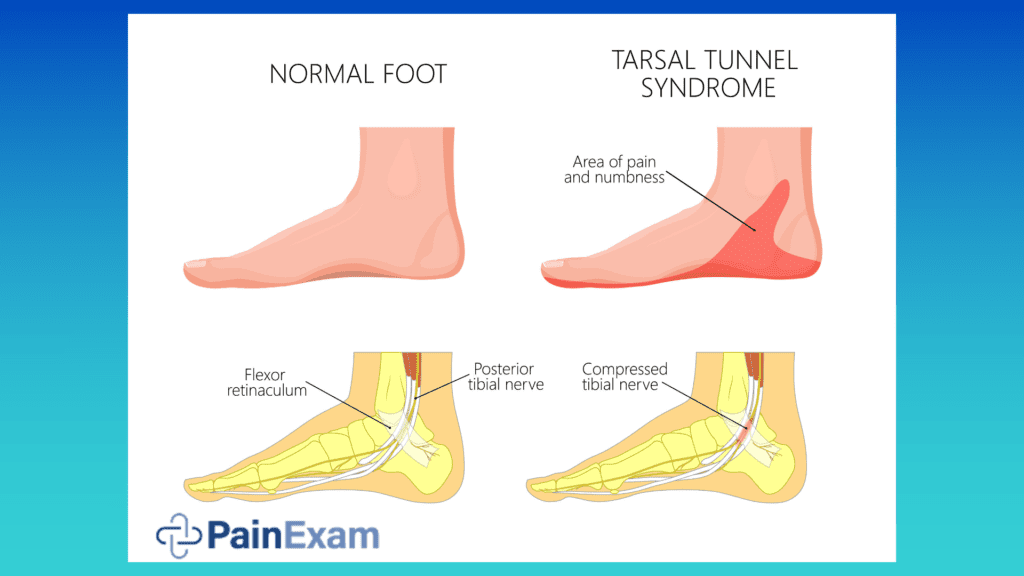
Typically, Dr. Rosenblum uses a transverse approach to locate the tibial nerve at the level of the medial malleolus. He uses an in-plane technique to guide his needle into the tarsal tunnel from posterior to anterior, through the retinaculum, and avoiding the posterior tibial artery.
Using ultrasound ensures a safe injection of local anesthetic into the compartment which houses the nerve.
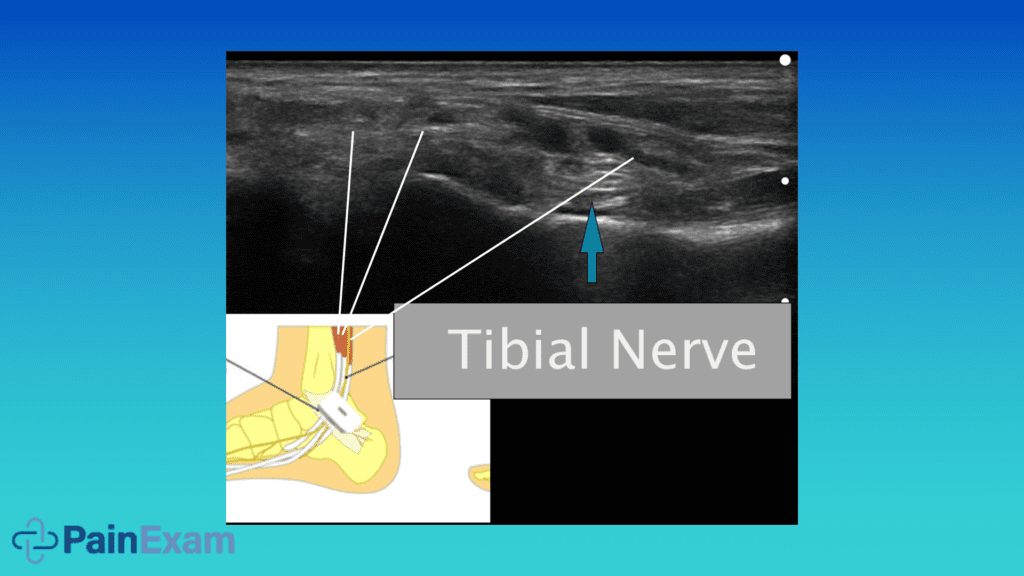
Watch the video to see how Dr. Rosenblum performs a tarsal tunnel injection.
About Dr. Rosenblum
Dr. Rosenblum is the Director of Pain Management at the Maimonides Medical Center in New York. A prolific educator, he hosts the Pain Exam Podcast and created a Pain Exam Board Review, which has helped more than 3,000 pain management physicians become board certified. He uses the Clarius L7 HD3 scanner to guide his procedures.
Interested in more ultrasound training? Visit www.nrappain.org for upcoming courses by Dr. Rosenblum.
There is no CME credit for watching this webinar however one may reflect upon the knowledge discussed and obtain CME credit via NRAPpain.org.
Clarius Ultrasound for Successful Pain Management Procedures
Take the guesswork out of pain management. Clarius ultrasound guidance improves procedural success and patient confidence.
To learn about how easy and affordable it is to add Clarius wireless ultrasound to your practice, visit our Pain Management Speciality Page. Or contact us today to request a demo.

